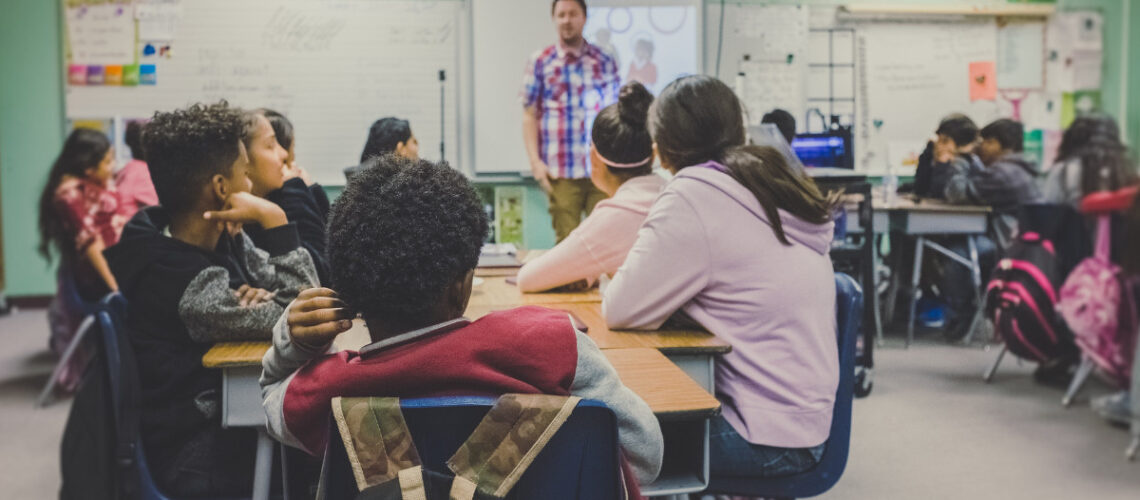In an era where technology is at the forefront of almost every aspect of life, its integration into the education sector is not just inevitable but essential. The concept of harnessing technology to level the educational playing field, particularly in underserved communities, has gained significant traction. This approach aims to provide equal learning opportunities to all students, regardless of their socio-economic background. Education professionals like Sean Monteith from Toronto, Ontario, Canada, are advocating for and implementing digital initiatives to bridge the educational divide.
The Digital Divide and Its Impact
The disparity in access to technology and digital resources between different socio-economic groups, often referred to as the digital divide, has profound implications on educational equity. Students in underserved communities often lag in digital literacy and access to technology, limiting their ability to engage with digital learning resources and hindering their overall academic progress. This gap has become more pronounced with the increase in digital learning platforms and resources.
Integrating Technology in Classrooms
Integrating technology in education goes beyond providing computers and internet access. It involves a holistic approach that includes digital literacy training for both students and teachers, access to quality educational content online, and the use of digital tools to enhance the learning experience. Sean Monteith and others in the field are working towards creating digitally inclusive learning environments where technology is used as a tool to facilitate and enhance education, rather than as a barrier.
Digital Literacy as a Key Component In Education
Digital literacy, the ability to use information and communication technologies to find, evaluate, create, and communicate information, is crucial in today’s world. In educational settings, imparting digital literacy ensures that students are not only consumers of digital content but are also equipped to be creators and critical thinkers in the digital realm. This skillset is vital for leveling the playing field, as it gives students in underserved communities the tools to compete on an equal footing with their peers from more privileged backgrounds.
Technology-Enabled Personalized Learning
One of the most significant advantages of technology in education is the ability to personalize learning. Students have different learning styles and paces, and technology can cater to these individual needs. Adaptive learning software, educational apps, and online resources can provide personalized learning experiences, making education more effective and engaging. Personalized learning approaches can particularly benefit students in underserved communities, who often do not have access to additional educational support.
Overcoming Barriers to Technology Integration
Despite the benefits, the integration of technology in education faces several barriers, especially in underserved areas. These include limited infrastructure, lack of trained personnel, and financial constraints. Addressing these challenges requires collaboration between governments, educational institutions, and private sectors. Initiatives like those led by Sean Monteith demonstrate the importance of targeted efforts to overcome these barriers, ensuring that technology becomes an enabler rather than a divider.
The Role of Educators and Administrators
Educators and administrators play a crucial role in the effective integration of technology in education. They must be equipped with the necessary skills and training to leverage digital tools in their teaching methods. Professional development programs focusing on technological integration strategies, digital literacy, and adaptive teaching methods are essential. Educators like Monteith are leading by example, showing the importance of continuous learning and adaptation in the rapidly evolving digital landscape of education.
Empowering Students through Technology
The ultimate goal of integrating technology in education is to empower students, giving them the tools, skills, and confidence to succeed in a digitally driven world. This empowerment is especially critical for students in underserved communities, as it opens up opportunities that were previously inaccessible due to technological barriers. Technology in education can be a great equalizer, providing a platform where every student has the opportunity to learn, grow, and succeed.
Future Prospects and Continuous Evolution
The journey of integrating technology in education is ongoing and constantly evolving. As new technologies emerge, so do new opportunities and challenges. The future of education lies in staying ahead of the curve, continuously adapting, and innovating to ensure that all students, regardless of their background, have access to the best possible educational resources and opportunities. The integration of technology in education is a critical step towards leveling the playing field for all students. It is a multifaceted approach that requires investment in infrastructure, digital literacy, and continuous professional development for educators. Leaders in education, like Sean Monteith, are at the forefront of this movement, advocating for and implementing strategies that ensure technology is a tool for inclusivity and equality in education. By harnessing the power of technology, we can create a more equitable educational landscape where every student has the opportunity to succeed and thrive in the digital age.

